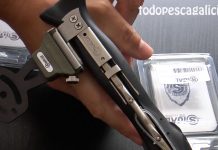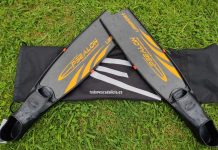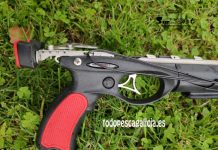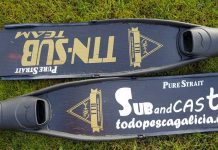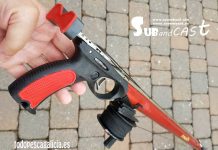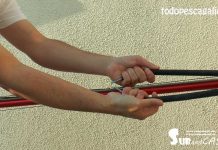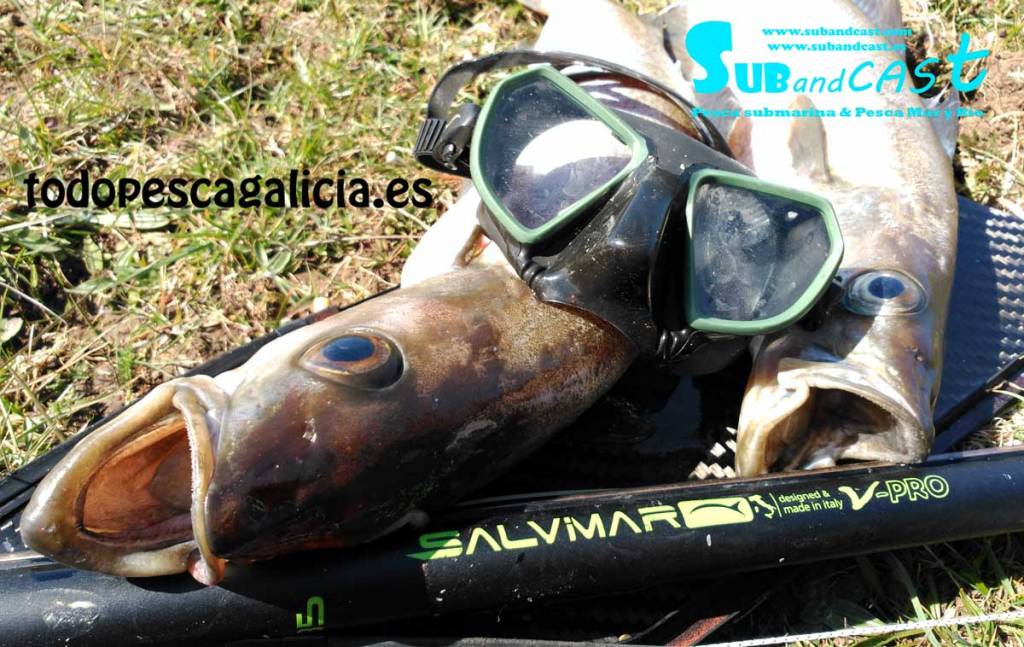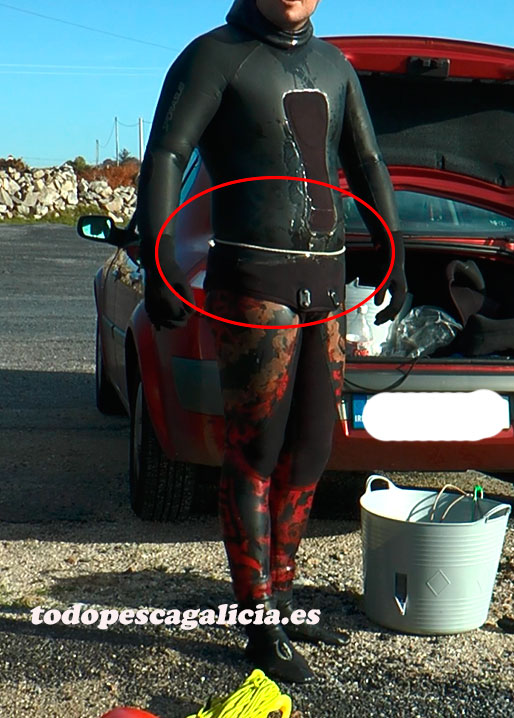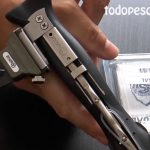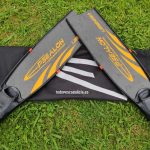NOISES AND CALLS FOR THE WAITING TECHNIQUE
The waiting technique is one of the most difficult and at the same time one of the most satisfactory. Difficult because every day can be different, and if yesterday those fish were coming close confident or somehow easy, today it can happen they keep the distance and it’s almost impossible to get them into shooting distance.
Without talking about the best spots, if hide or not… (we leave this for new articles, or it would be too long and heavy) today we are going to talk about the noises or calls to incite the fish to get close.
It is a topic that always causes questions, because we could think that the waiting technique is about getting hidden very well and wait for the fish to come. Something a bit absurd. If we pass unnoticed, if the fish doesn’t know we are there, why would it come?
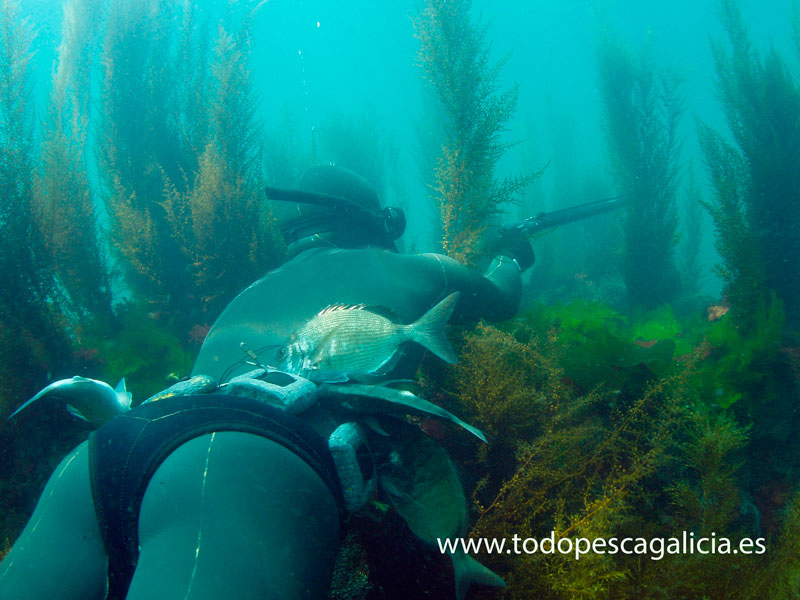
The first thing to take in mind is that, generally, the potential captures realize that we are around in the moment we start the dive already. They will know that “something” has dived and it is around there. The main mechanism they have to know what is happening around them is the lateral line, they don’t need to see. Just when we wait in the foam, with heavy swell, or spots with dense sea weed, being very smooth with the duckdive, it can happen that they don’t notice about us.
For this, once we reach the bottom, we can use calls or noises to awake the curiosity of the fish and make them come close to us. We are going to focus on this now (other topics will be addressed in the future, each of them specifically).
The first thing to have in mind is that some days they come when they hear these calls, but other days they don’t, or they even scape. We will have to check. And also, some of them work better with some specific species. Let’s see them one by one.
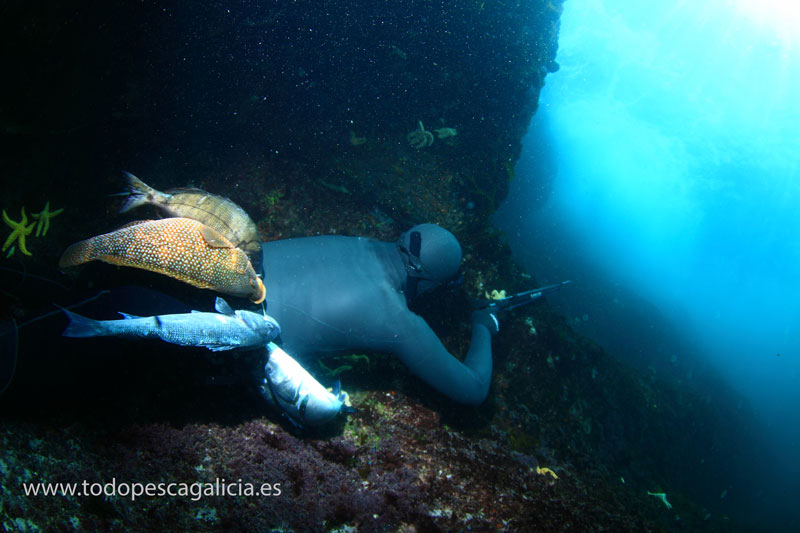
Noises with the throat: For predators like the white sea bass or the dentex is one of the most effective. They would be some “hits” with the throat, a dry noise. Doing repetitions with two or three. Stopping and starting again. Sometimes even making them stronger or higher, a noise like when we are running out of air. Sometimes, with the with sea bass, it worked better the more strident it was, making them to come faster each time.
In the video, we can hear it at 00:47.
In this other video it is also possible to hear how they are called:
Noises with the rubber bands: What we will do it is to rub the rubbers of the speargun with one finger when they are loaded. It’s very similar to the previous one and we recommend to use better the throat noise. It will allow us to stay in a better position, always aiming and without movements.
Hit the frame of the mask with the handler of the gun: Exactly the same than the previous ones, we just produce a dry noise that will attract a lot of species.
Noises with the rocks: We can distinguish between hitting the handle against the rocks, which will be more or less like the previous ones. And scratching with the handle or the hands. This brush is very useful for the white sea bream, specially when we do short waits close to the foam, to attract the ones who are eating a bit higher. I got the best results using my fingers, scratching the rocks, the problem is that the gloves get quite wore out (the fingers I use to scratch always end breaking earlier than the rest). It is also useful for the gilthead, the red porgy and the red mullet. And in general for all the fish that usually stay around the rocks or on it, eating. It also works for the big ballan wrasses. When we see they don’t get close, or if they scape slowly, if we stay still and we do this noises we can make them turn and come to us a lot of times.
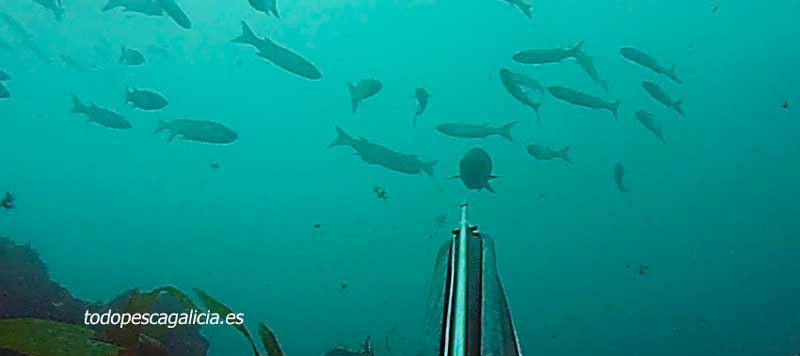
Hoist sand: This action, of burying the hand in the sand and lifting it up, is very effective for the fish that eat on it. Red porgy, gilthead, red mullet… Even for the white sea bass when they are around. The reason it seems to be that they hear the noise, they see the lifted sand, like when they eat, and they get close to check if there is food or something. Just put the hand in the sand and move the fingers is enough.
There are a lot more, but as we can see, it’s just about doing some kind of noise that could attract the attention of the fish. The predators are aware of them and they can get close due to curiosity reasons, specially the bigger they are.
Our advice is to start ALWAYS a wait, the first one, with not a single noise. A silent duckdive, reach the bottom and stay hidden, without noises or hits, and do the wait. If there is any suspicious fish around, it could get close to us instead of escaping scared. Because we will see that a lot of times, they go away with the minimum noise, without giving us a chance (not even to see them).
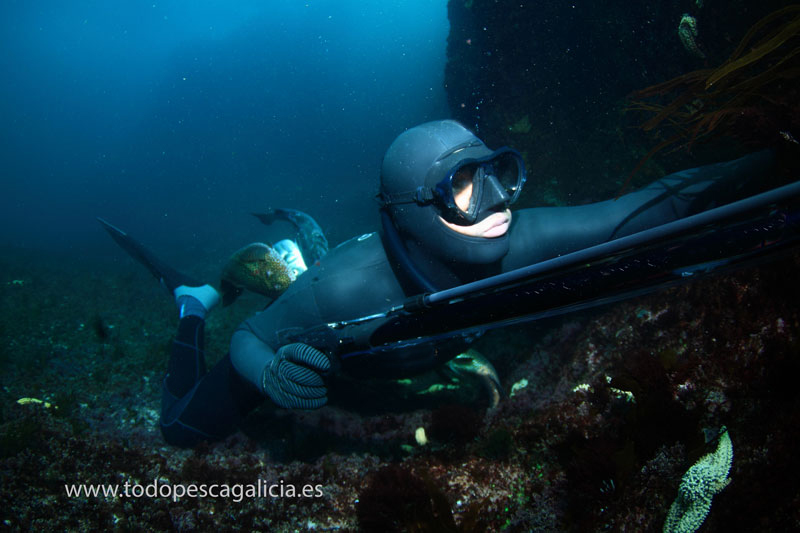
After that, if we are not lucky, we will dive again and make some noise. We can check one after the other, on different dives, or even try several during the same dive.
Watch out, because a lot of times they will approach us by our back. We will not see them if we are not aware. And it’s even better to let them pass and change our position in the next dive, because if we try to turn it’s possible that it gets scared and scape.
We will never move our head suddenly, or the eyes. The fish pay attention to our eyes and if we move them, we will ruin the wait. The sight always has to be to the front, and we have to move slowly, trying that the fish goes to the shooting distance, instead of we try to aim it.
It’s important to stay calm. If we don’t see it clear, don’t waste the situation. Using the waiting technique, we can have more opportunities a lot of times. If one doesn’t do right, let the fish go. Return to the surface calmed, slow, without sudden movements, we breathe up without rushing and we dive again, in a better position, changing the noises… a fast ascent, hurried, extremely long breath-holds… will only make us ruin the spot.
And there are days when we can do whatever we want, and it’s impossible. It happened to me one day I saw several dentex and I couldn’t get any to come close to me. The next day, same time, same tide, it seemed to be the same conditions… And exactly in the same spot (a sandy area with sea weed on the border) and they were coming to me like crazy.
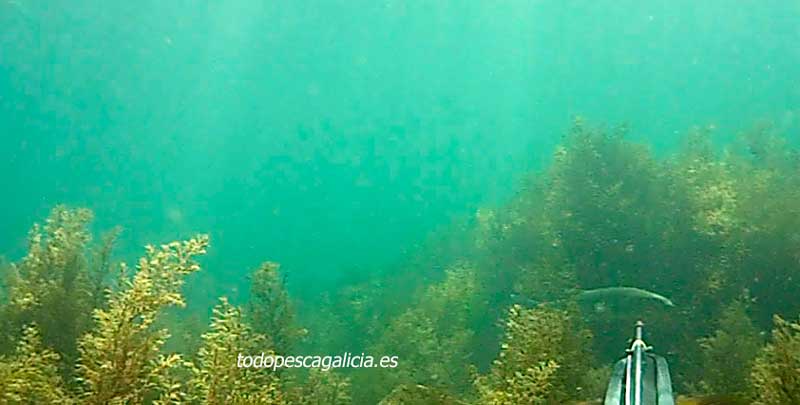
Another important thing is the breath hold time. A well done wait, with a good duckdive, hiding or staying in the right place, doing the right noises (or staying in complete silence) will make the fish to come to shooting distance really fast, without having to be a long time on the bottom. However, with a bad wait, we can be a long time on the bottom, and we will only see the fish out of range longer (or not seeing absolutely nothing). For this, the main thing is the technique, focus on it and not on the time.
I can I say that for white sea bass, big white sea bass, gilthead, dentex… I never needed more than 20 seconds on the bottom. And a lot of times, not even 10 second. So let’s forget about being a lot of time on the bottom. The important thing is to know how to do it and to be in the right place (this topic will be addressed in another article).
You can leave your comments or questions.
We leave here some more videos to see the waiting technique:
You have more in the videos section, located on the upper menu of this page.



